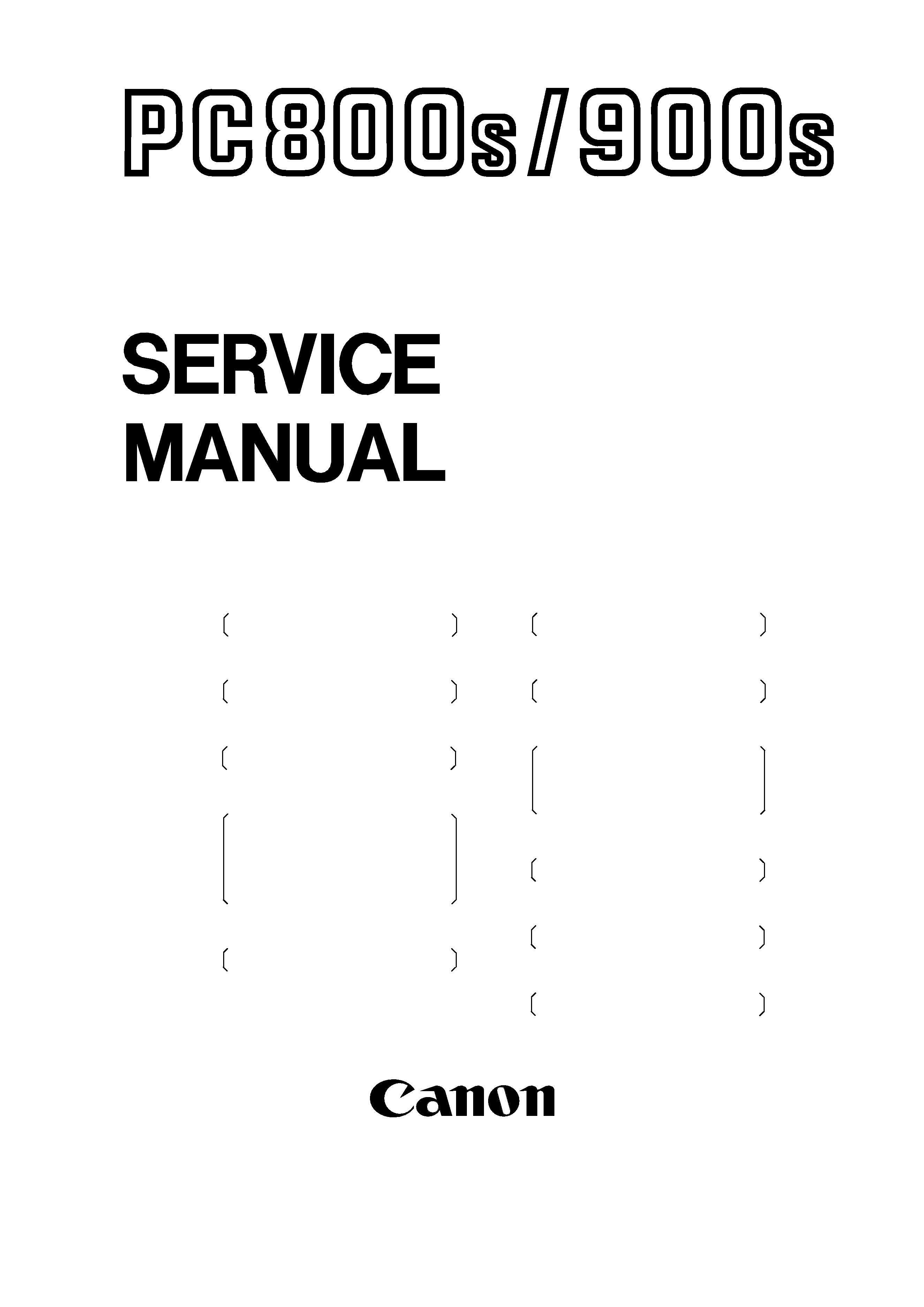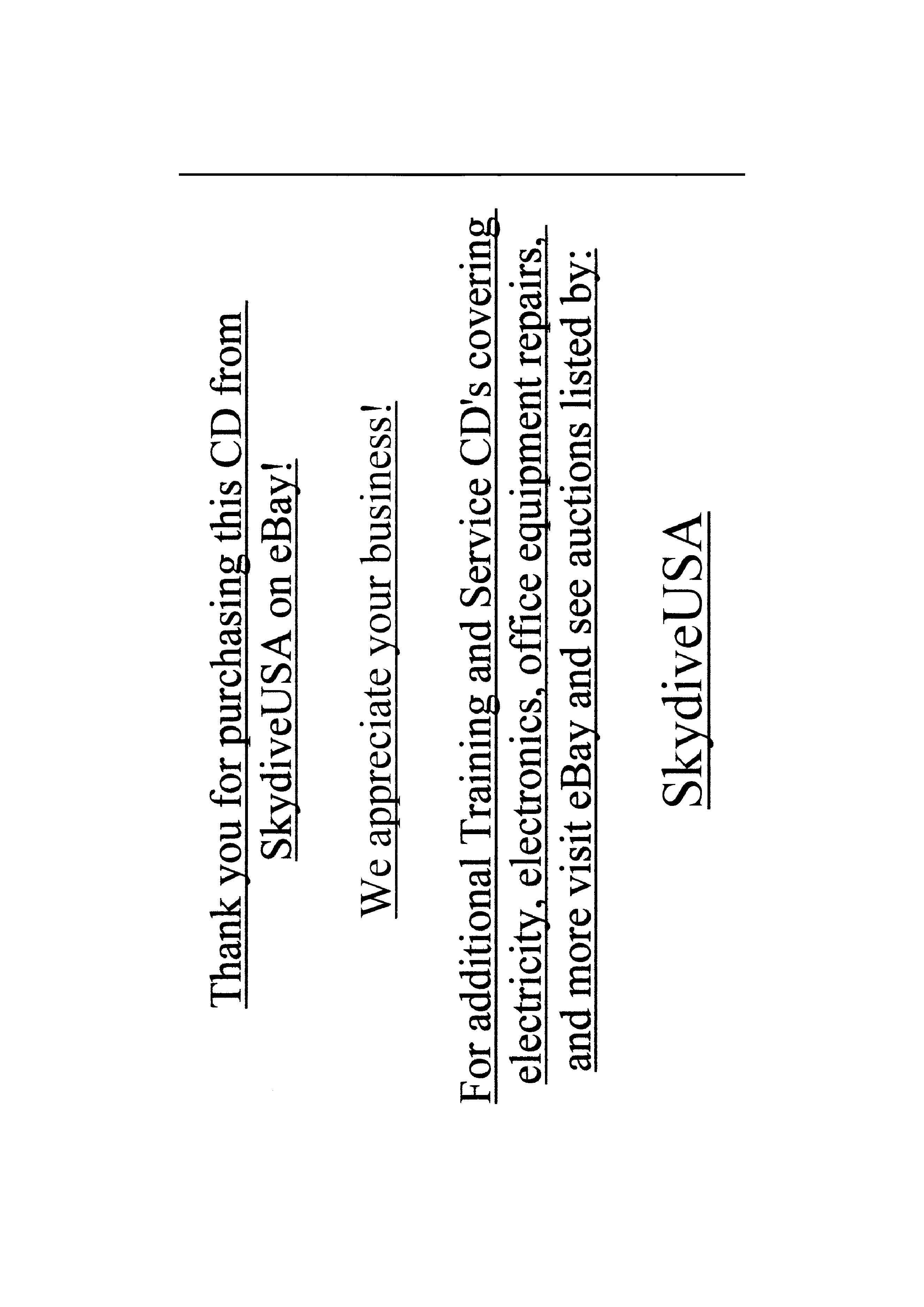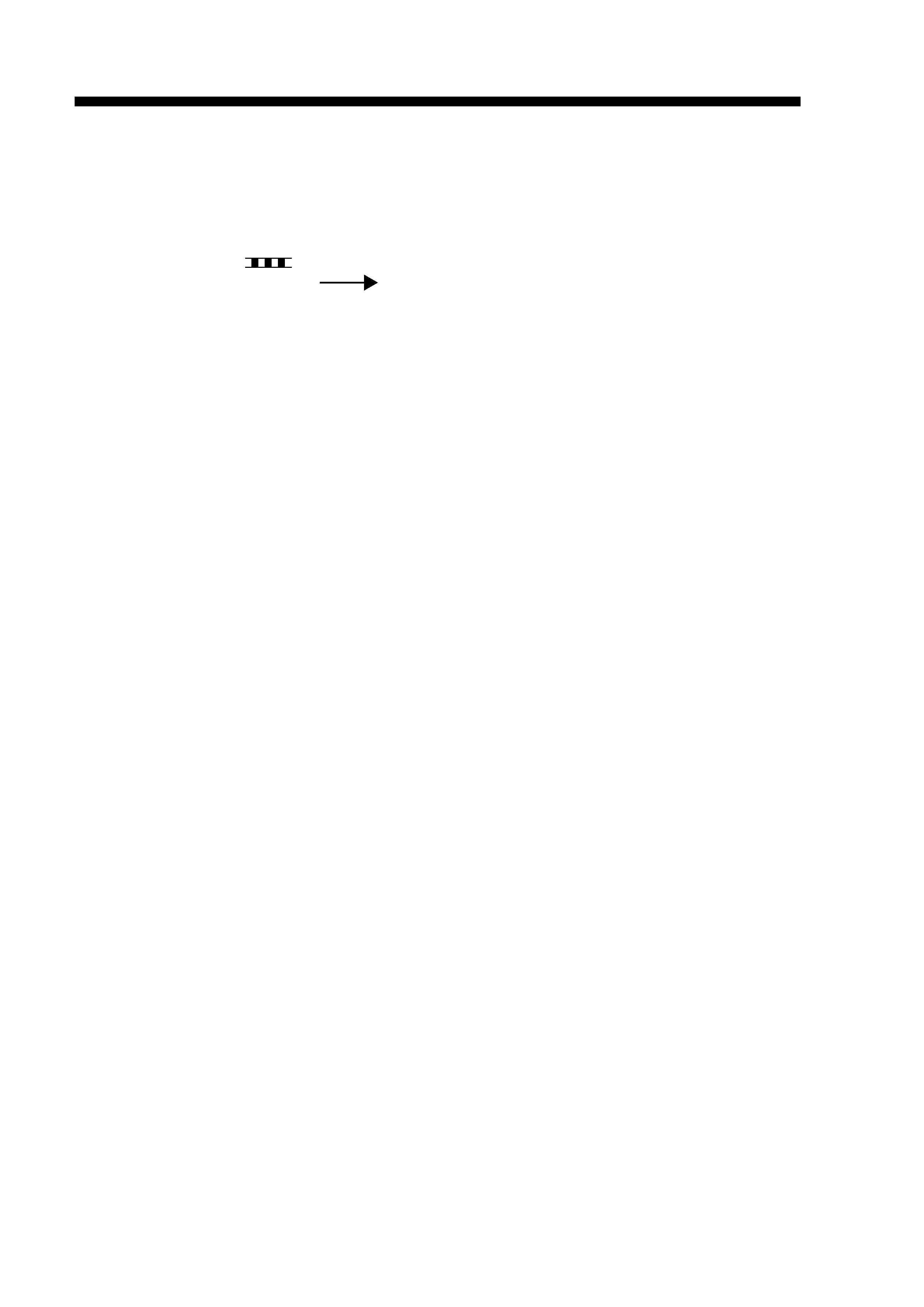
COPYRIGHT © 1999 CANON INC.
CANON PC800s/900s REV.0 AUG. 1999 PRINTED IN JAPAN (IMPRIME AU JAPON)
REVISION 0
FY8-13GA-000
AUG. 1999
PC860
F13-8491
TYA00001-
PC880
F13-8291
TZA00001-
PC890
F13-8242
UAA00001-
PC920
F13-8431
TVB00001-
F13-8441
PUD00001-
PUE00001-
F13-8461
PUH00001-
PC921
F13-8432
TVC00001-
PC940
F13-8436
TVD00001-
PC941
F13-8437
TVE00001-
PC950
F13-8231
TVF00001-
F13-8241
PUF00001-
PUG00001-
PC960
F13-8434
TVG00001-
PC980
F13-8232
TVH00001-
PC981
F13-8233
TVJ00001-


COPYRIGHT © 1999 CANON INC.
CANON PC800s/900s REV.0 AUG. 1999 PRINTED IN JAPAN (IMPRIME AU JAPON)
IMPORTANT
THIS DOCUMENTATION IS PUBLISHED BY CANON INC., JAPAN, TO SERVE AS A SOURCE
OF REFERENCE FOR WORK IN THE FIELD.
SPECIFICATIONS AND OTHER INFORMATION CONTAINED HEREIN MAY VARY SLIGHTLY
FROM ACTUAL MACHINE VALUES OR THOSE FOUND IN ADVERTISING AND OTHER
PRINTED MATTER.
ANY QUESTIONS REGARDING INFORMATION CONTAINED HEREIN SHOULD BE DIRECTED
TO THE COPIER SERVICE DEPARTMENT OF THE SALES COMPANY.
THIS DOCUMENTATION IS INTENDED FOR ALL SALES AREAS, AND MAY CONTAIN INFOR-
MATION NOT APPLICABLE TO CERTAIN AREAS.
COPYRIGHT © 1999 CANON INC.
Printed in Japan
Imprimé au Japon
Use of this manual should be strictly su-
pervised to avoid disclosure of confidential
information.
Prepared by
OFFICE IMAGING PRODUCTS TECHNICAL SUPPORT DIVISION
CANON INC.
5-1, Hakusan 7-chome, Toride-shi, Ibaraki 302-8501 Japan

COPYRIGHT © 1999 CANON INC.
CANON PC800s/900s REV.0 AUG. 1999 PRINTED IN JAPAN (IMPRIME AU JAPON)
i
This service manual has been prepared for the PC800/900 Series machines,
providing basic information used for servicing the machines in the field so as to ensure
their quality and performance.
This service manual consists of the following chapters:
Chapter 1
General Description introduces the machine's features, specifications,
names of parts, and how originals are reproduced.
Chapter 2
Basic Operation explains how copies are made on a step-by-step basis.
Chapter 3
Exposure System discusses the principles of operation used for the
machine's exposure system. It also explains the timing at which exposure-
related mechanisms are operated, and shows how they may be
disassembled/assembled and adjusted.
Chapter 4
Image Formation System discusses the principles of operation used for the
machine's image formation system. It also explains the timing at which image
formation-related mechanisms are operated, and shows how they may be
disassembled/assembled and adjusted.
Chapter 5
Pick-Up/Feeding System discusses the principles of operation used for the
machine's pickup/feeding system. It also explains the timing at which pickup/
feeding-related mechanisms are operated, and shows how they may be
disassembled/assembled and adjusted.
Chapter 6
Fixing System discusses the principles of operation used for the machine's
fixing system. It also explains the timing at which fixing-related mechanisms
are operated, and shows how they may be disassembled/assembled and
adjusted.
Chapter 7
Externals/Auxiliary Mechanisms discusses the principles of operation used
for the machine's externals/auxiliary mechanisms. It also explains the timing
at which auxiliary mechanism-related mechanisms are operated, and shows
how they may be disassembled/assembled and adjusted.
Chapter 8
ADF explains the principles of operation of the ADF in view of electrical and
mechanical functions and in relation to their timing of operation. It also shows
how the unit may be disassembled/assembled and adjusted.
Chapter 9
Installation introduces requirements for the site of installation, and shows
how the machine may be installed using step-by-step instructions.
Chapter 10
Maintenance and Servicing provides tables of periodically replaced parts and
consumables/durables and scheduled servicing charts.
Chapter 11
Troubleshooting provides tables of maintenance/inspection, standards/
adjustments, and problem identification (image fault/malfunction).
Appendix contains a general timing chart and general circuit diagrams.
INTRODUCTION

COPYRIGHT © 1999 CANON INC.
CANON PC800s/900s REV.0 AUG. 1999 PRINTED IN JAPAN (IMPRIME AU JAPON)
ii
The following rules apply throughout this Service Manual:
1.
Each chapter contains sections explaining the purpose of specific functions and the
relationship between electrical and mechanical systems with reference to the timing
of operation.
In the diagrams,
represents the path of mechanical drive--where a signal name
accompanies the symbol
, the arrow indicates the direction of the electric sig-
nal.
The expression "turn on the power" means flipping on the power switch, closing the
front door, and closing the delivery unit door, which results in supplying the machine
with power.
2.
In the digital circuits, `1' is used to indicate that the voltage level of a given signal is
"High," while `0' is used to indicate "Low." (The voltage value, however, differs from
circuit to circuit.)
In practically all cases, the internal mechanisms of a microprocessor cannot be checked
in the field. Therefore, the operations of the microprocessors used in the machines
are not discussed: they are explained in terms of from sensors to the input of the DC
controller PCB and from the output of the DC controller PCB to the loads.
The descriptions in this Service Manual are subject to change without notice for
product improvement or other reasons, and major changes will be communicated in the
form of Service Information bulletins.
All service persons are expected to have a good understanding of the contents of this
Service Manual and all relevant Service Information bulletins and be able to identify and
isolate faults in the machine.
